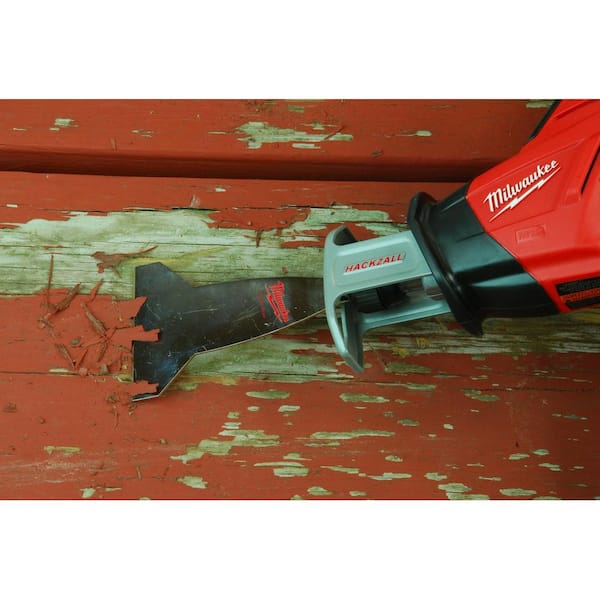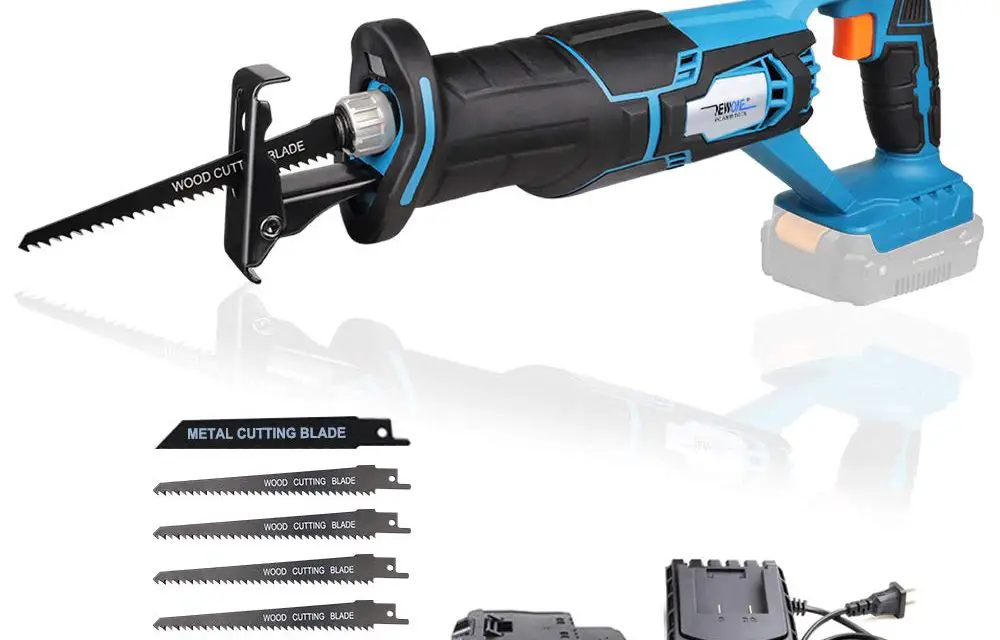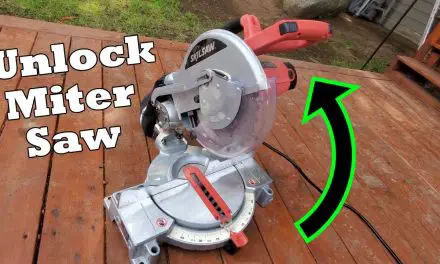A reciprocating saw is used for cutting through wood or metal, pruning trees and branches, scraping surfaces, and cutting through nail-embedded wood. It is a versatile tool that applies brute force for various tasks.
Reciprocating saws are commonly used in woodworking, construction, and demolition projects. They are also popular among DIY enthusiasts for their ability to tackle a wide range of cutting tasks. Whether you need to make fast cuts, remove old materials, or shape materials, a reciprocating saw can get the job done efficiently and effectively.
With the right blade, it can handle tough materials and challenging angles, making it a valuable addition to any toolbox.
2. Cutting Through Wood And Metal
Reciprocating saws have multiple uses, including cutting through wood and metal. When cutting through wood with a reciprocating saw, make sure to use the appropriate blade for the type of wood you are cutting. It is important to position the saw at the desired angle and apply steady pressure to achieve a clean cut.
When cutting through metal, choose a blade specifically designed for metal cutting to ensure efficiency and accuracy. It is crucial to wear safety gloves and goggles to protect yourself from sparks and metal shavings. To ensure efficient cutting, maintain a steady pace and let the saw do the work, avoiding excessive pressure or forcing it.
Remember to periodically check and replace the blades as needed for optimal performance.
3. Pruning Trees And Branches
A reciprocating saw has multiple uses, including pruning trees and branches. When it comes to pruning trees, a reciprocating saw is a valuable tool. It can easily cut through thick branches, making trimming and shaping trees a breeze. Additionally, for pruning branches, a reciprocating saw is highly effective.
Its powerful motor allows for quick and precise cuts, making it an ideal tool for maintaining healthy trees. However, safety precautions must be followed when using a reciprocating saw for pruning. It is important to wear protective gear, such as gloves and goggles, and to be cautious of the saw’s sharp blade.
By following these safety guidelines, you can safely and efficiently prune trees and branches using a reciprocating saw.
4. Scraping Surfaces
A reciprocating saw is not just limited to cutting through wood or metal. It can also be used for scraping surfaces. When it comes to scraping surfaces with a reciprocating saw, it can be effective in removing paint and caulk.
However, it’s important to follow best practices when using a reciprocating saw for scraping. Firstly, choose the appropriate blade for scraping tasks. Moreover, ensure that the surface you are scraping is secure and stable. Additionally, it’s recommended to use a back-and-forth motion while scraping.
This helps to effectively remove the material without causing any damage. In addition, it’s important to wear appropriate safety gear such as goggles and gloves. By following these best practices, you can make the most out of your reciprocating saw when it comes to scraping surfaces.

Credit: www.homedepot.com
5. Cutting Through Nail-Embedded Materials
A reciprocating saw is a versatile tool that can be used for various tasks. One of its main uses is cutting through nail-embedded materials such as wood. When it comes to cutting through nail-embedded wood with a reciprocating saw, it is important to consider the features of the saw that make it suitable for this task.
Reciprocating saws are equipped with powerful motors and sharp blades, allowing them to easily cut through nails without getting stuck. Safety is also a crucial aspect when working with nail-embedded materials. It is important to wear protective gloves and goggles to prevent any injuries.
Additionally, it is recommended to secure the material properly and work at a steady pace to ensure accurate cuts. By following these safety tips and utilizing the features of a reciprocating saw, cutting through nail-embedded materials can be done efficiently and effectively.
6. Choosing The Right Blade For Different Uses
The right blade selection is crucial when using reciprocating saws for different purposes. There are various types of blades available specifically designed for different materials. A blade selection guide can help you choose the right blade for various cutting tasks.
It’s important to consider factors like the material you’re cutting, the thickness, and the desired finish. Additionally, knowing how to efficiently change blades is essential for a smooth workflow. Make sure to follow the manufacturer’s instructions and use the appropriate tools when changing blades.
Proper blade selection and efficient blade-changing techniques will enhance the effectiveness and safety of your reciprocating saw tasks.
7. Safety Precautions For Using Reciprocating Saws
A reciprocating saw is a versatile tool that can be used for various purposes. It is commonly used for cutting through wood or metal, pruning trees and branches, scraping surfaces, and even cutting through nail-embedded wood. When using a reciprocating saw, it is important to follow safety precautions to prevent accidents.
One of the safety precautions is wearing proper protective gear, such as safety goggles, gloves, and ear protection. It is also important to hold the saw correctly, ensuring a firm grip and proper positioning. Additionally, it is crucial to avoid kickback and other hazards by keeping your hands and fingers away from the cutting area and maintaining a stable stance while operating the saw.
By following these safety precautions, you can ensure a safer and more efficient use of reciprocating saws.
8. Maintenance And Care For Reciprocating Saws
A reciprocating saw is a versatile tool with various uses. After using the saw, it’s important to clean it properly to maintain its performance. Remove any debris or sawdust from the tool and ensure that all moving parts are free from obstructions.
Additionally, lubricating the saw’s moving parts helps to reduce friction and extend its lifespan. Apply a small amount of lubricant to the blade, gears, and other components that require lubrication. Finally, storing the saw properly is crucial for its protection.
Find a dry and secure place to keep the saw, away from moisture and excessive heat or cold. Following these maintenance and care practices will ensure that your reciprocating saw stays in optimal condition for a long time.
9. Important Features To Consider When Buying A Reciprocating Saw
A reciprocating saw is a versatile tool that can be used for various purposes. It is commonly used for cutting through wood or metal with its powerful and fast reciprocating motion. Additionally, it can be used for pruning trees and branches, as well as scraping surfaces.
The saw’s ability to cut through nail-embedded wood makes it ideal for construction and renovation projects. When buying a reciprocating saw, important features to consider include whether it is corded or cordless, power and speed options, and additional features and accessories.
Corded saws provide consistent power but are limited by the length of the cord, while cordless saws offer freedom of movement but may have limited battery life. Power and speed options allow for customization based on the specific project requirements.
Additional features and accessories such as blade change mechanisms and adjustable shoe plates can enhance the saw’s functionality and ease of use.
10. Tips And Tricks For Using Reciprocating Saws Effectively
A reciprocating saw is a versatile tool that has many different uses. It is commonly used for cutting through both wood and metal, making it a handy tool for construction and demolition projects. Additionally, a reciprocating saw can be used for pruning trees and branches, providing a quick and efficient way to maintain your yard.
Another creative use for a reciprocating saw is scraping surfaces, such as removing old paint or adhesive from walls or floors. Furthermore, this tool is capable of cutting through nail-embedded wood, making it an essential tool for remodeling or renovation projects.
With the proper technique and blade selection, you can achieve precision cuts and save time on your projects. Whether you are a professional contractor or a DIY enthusiast, a reciprocating saw should be a staple tool in your arsenal.
Frequently Asked Questions For What Do You Use a Reciprocating Saw For?
What Are The Main Uses Of A Reciprocating Saw?
A reciprocating saw is versatile and can be used for cutting wood or metal, pruning trees and branches, scraping surfaces, and cutting nail-embedded wood.
When Should You Not Use A Reciprocating Saw?
Reciprocating saws should not be used in the following situations: 1. When you need precise and delicate cuts, as reciprocating saws are designed for more aggressive and rough cutting. 2. When cutting through materials that may cause kickback or bind the blade, such as metal pipes or branches with nails.
3. When working in tight spaces where the long blade of a reciprocating saw may be difficult to maneuver. 4. When working on intricate or detailed woodworking projects that require more finesse and control.
Is It Worth Buying A Reciprocating Saw?
A reciprocating saw is worth buying because it is versatile and can be used for cutting wood, and metal, pruning trees, scraping surfaces, and cutting through nail-embedded wood.
Conclusion
A reciprocating saw is an incredibly versatile tool that can be used for a variety of tasks. While its primary function is to apply brute force and cut through materials with ease, it has many other practical uses. From cutting through wood or metal to pruning trees and branches, scraping surfaces, and even cutting through nail-embedded wood, the reciprocating saw is a go-to tool for many professionals and DIY enthusiasts.
Its power and precision make it an essential tool in construction, woodworking, and even general household tasks. Whether you’re a professional tradesperson or a casual DIYer, a reciprocating saw should be a staple in your toolkit. Its versatility and efficiency make it a valuable asset for tackling a wide range of projects.
So, the next time you find yourself in need of a tool that can take on the toughest cutting tasks, reach for a reciprocating saw and experience its power firsthand.



















